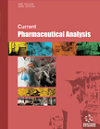
Full text loading...
We use cookies to track usage and preferences.I Understand
Anticancer herbal drugs have gained significant attention in pharmaceutical research due to their complex chemical profiles and multifaceted therapeutic effects. Electrochemical analysis has emerged as a powerful tool for studying these compounds, offering unique insights into their behavior and properties.
This review examines recent advances in the electrochemical analysis of five key anticancer herbal drugs: emodin, rutin, berberine, shikonin, and sophoridine. Various electrochemical techniques, including cyclic voltammetry, differential pulse voltammetry, and square wave voltammetry, are discussed in relation to their application in detecting and characterizing these compounds.
Significant progress has been made in developing highly sensitive and selective electrochemical sensors for these herbal drugs. Nanomaterial-modified electrodes have consistently improved detection limits and expanded linear ranges. Compound-specific innovations in electrode modifications and measurement techniques have been tailored to the unique electrochemical properties of each drug.
Electrochemical analysis of anticancer herbal drugs has advanced substantially, offering powerful tools for studying and utilizing these compounds in cancer research and treatment. Future directions include the development of multi-analyte sensors, integration with microfluidic technologies, and application of artificial intelligence for data analysis. Challenges remain in improving the stability of modified electrodes and standardizing protocols for sample preparation and analysis.

Article metrics loading...

Full text loading...
References


Data & Media loading...

